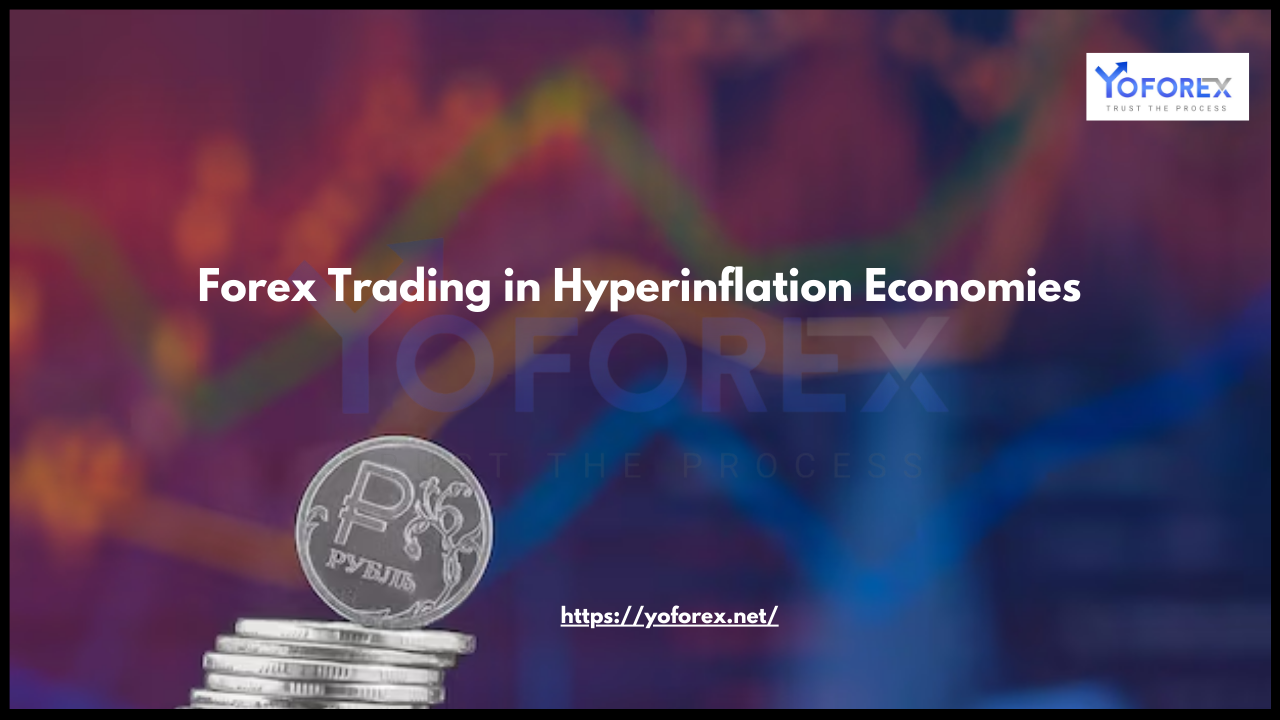Hyperinflation is an economic phenomenon characterized by an excessive and uncontrollable rise in prices, leading to a rapid erosion of a currency’s value. In such situations, local economies become unstable, and citizens often turn to foreign currencies or alternative financial instruments to preserve their wealth. Forex trading in hyperinflationary economies presents both challenges and opportunities. This guide explores how traders can navigate these uncertain waters and make informed decisions.
Understanding Hyperinflation and Its Causes
Hyperinflation occurs when a country experiences an extreme and prolonged increase in the money supply without a corresponding growth in goods and services. Some common causes include:
- Excessive Money Printing: Governments print excessive amounts of money to cover deficits, leading to a decline in purchasing power.
- Loss of Confidence in Currency: When people lose trust in their currency, they rapidly exchange it for foreign currencies or goods, exacerbating inflation.
- Political and Economic Instability: Wars, sanctions, and mismanagement of resources contribute to hyperinflation.
- Supply Chain Disruptions: Shortages of essential goods and services drive prices up uncontrollably.
Examples of hyperinflation include Germany’s Weimar Republic in the 1920s, Zimbabwe in the 2000s, and Venezuela in recent years.
Impact of Hyperinflation on Forex Markets
Hyperinflation drastically affects currency markets and influences trading strategies in several ways:
- Currency Depreciation: The local currency rapidly loses value, making it unattractive for investment.
- Increased Volatility: Sharp fluctuations in exchange rates create high-risk trading environments.
- Shift to Hard Currencies: Traders and investors flock to more stable currencies like the US dollar (USD), Euro (EUR), or Swiss franc (CHF).
- Rise in Black Market Trading: Official exchange rates become unreliable, and parallel markets emerge, impacting currency liquidity.

Opportunities for Forex Traders
Despite the economic turmoil, forex traders can find profitable opportunities in hyperinflationary economies:
1. Trading Safe-Haven Currencies
Safe-haven currencies like the USD, CHF, and gold-backed assets tend to rise in value as people seek stability. Traders can capitalize on this trend by going long on these assets.
2. Arbitrage Opportunities
Discrepancies between official and black market exchange rates create arbitrage opportunities. Traders with access to multiple forex markets can exploit these differences for profits.
3. Short Selling Weak Currencies
Selling hyperinflation-affected currencies against stronger ones allows traders to profit from declining value trends.
4. Using Hedging Strategies
Businesses and investors in affected countries can use forex trading as a hedge against inflation. By holding foreign currency positions, they can preserve their wealth.
Risks and Challenges
Forex trading in hyperinflation economies comes with significant risks:
- Government Interventions: Many governments impose strict capital controls, limiting forex trading activities.
- Unreliable Market Data: Official inflation and exchange rate statistics are often manipulated, making market analysis difficult.
- Liquidity Issues: In some cases, forex liquidity may dry up, leading to large bid-ask spreads and execution delays.
- Geopolitical Risks: Political instability and policy changes can lead to sudden market shocks, increasing risks for traders.
Strategies for Successful Forex Trading in Hyperinflation Economies
To navigate forex trading in hyperinflationary conditions, traders should consider the following strategies:
1. Diversification
Holding multiple currency pairs, commodities, and foreign assets helps mitigate risks associated with a collapsing local currency.
2. Focus on Technical Analysis
Since economic fundamentals are often unreliable, traders should rely more on technical analysis, using indicators like moving averages, RSI, and Bollinger Bands to identify trends.
3. Stay Informed
Monitoring economic and political developments helps traders anticipate major market moves. Subscribing to reliable financial news sources is essential.
4. Utilize Stop-Loss Orders
Given the extreme volatility, stop-loss orders help limit potential losses and protect investments.
5. Trade with a Reliable Broker
Choosing a forex broker with access to international markets, robust security measures, and low spreads is crucial.
Case Study: Venezuela’s Forex Market
Venezuela is a prime example of hyperinflation affecting forex trading. The Venezuelan bolívar (VEF) saw massive devaluation, leading citizens and traders to adopt USD and cryptocurrencies. The government imposed strict forex controls, but a thriving black market emerged. Traders who shorted the bolívar or invested in foreign assets were able to safeguard their wealth despite the economic turmoil.
Conclusion
Forex trading in hyperinflation economies is a high-risk, high-reward endeavor. While currency depreciation and volatility create challenges, they also open up opportunities for skilled traders. By focusing on safe-haven currencies, exploiting arbitrage opportunities, and implementing risk management strategies, traders can navigate these turbulent conditions successfully. Staying informed, adapting to market changes, and using reliable trading platforms will be key to thriving in such economic environments.
Stay Updated & Download: https://yoforex.net/forex-trading-in-hyperinflation-economies/
😎 Happy Trading 😎

